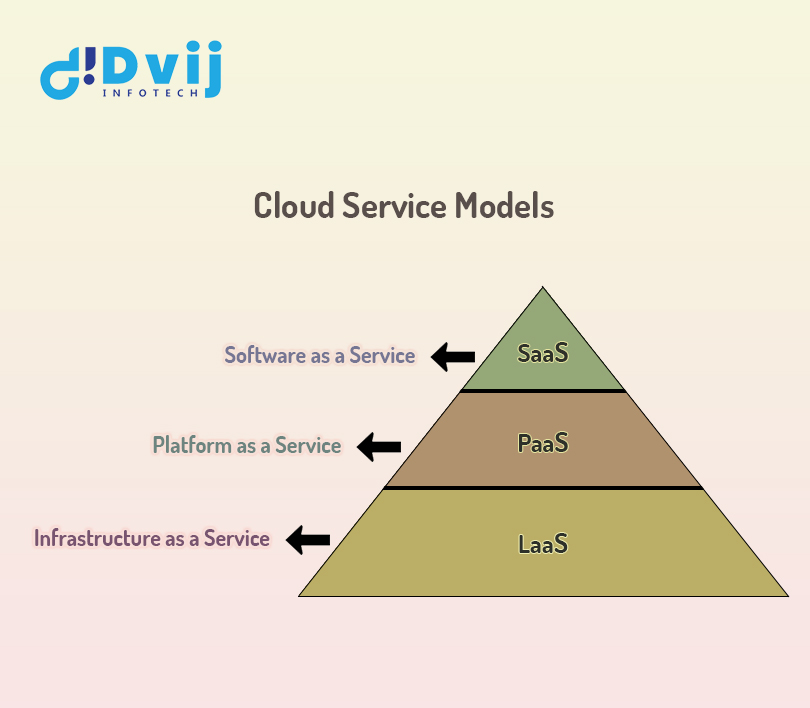Cloud computing refers to any hosted service provided through the internet. Servers, databases, software, networks, analytics, and other computing operations that can be operated through the cloud are common examples of these services.
Users using the service can access files and programs stored in the cloud from anywhere, removing the need to always be near physical hardware. In the past, user-created documents and spreadsheets had to be saved to a physical hard disc, USB drive, or disc. The data were absolutely unavailable outside of the computer they originated on without some form of the hardware component. Few people are concerned about fried hard drives or misplaced or corrupted USB devices thanks to the cloud. Because the material is stored on a network of hosted computers that transport data over the internet, cloud computing makes the papers accessible from anywhere.
Models of cloud computing
Models for Cloud Computing Because we don't understand basic cloud principles, architecture, or benefits and drawbacks, let's look at several cloud computing models and their associated business values.
As indicated in the picture below, cloud computing models can be matched to tiers of the corporate value pyramid:
Infrastructure as a Service (IaaS) is a type of cloud
Developers and IT organizations can use the infrastructure cloud to create business solutions because it provides storage and computes resources as a service. The concept of a virtual private server (VPS) has evolved into IaaS. Consumers have complete control over which workstations, servers, and network resources they use. Customers can tailor the entire infrastructure bundle by choosing CPU hours, storage space, and bandwidth, among other options. Rather than purchasing expensive servers and dealing with the headaches of setting up data centers, the IaaS cloud allows businesses to significantly reduce IT CAPEX and OPEX. IaaS is divided into three categories: public, private, and hybrid. The public cloud is made up of shared resources that are maintained by the service provider. Private cloud, on the other hand, allows safe access to your resources and is maintained by the enterprise that it serves. Both internal and external providers manage the hybrid cloud. Business agility, cost reduction, reliability, scalability, privacy and governance, and a single integrated user experience are all benefits of IaaS.
IaaS has the following basic characteristics:
- Resources are made available as a service.
- Dynamic, on-demand resource scaling
- Model of pricing based on utility
- On a single piece of hardware, multiple users can be active at the same time.
Platform as a Service (PaaS)
Platform as a Service (PaaS) Platform cloud is the next level up in the pyramid. PaaS is a service that provides development and operational environments. It comes with a collection of tools and services that make coding and delivering apps easier and faster.
PaaS is similar to SaaS, except that instead of software being given via the web, it provides a platform for the development/deployment of that software. PaaS has the following basic characteristics:
- Applications can be developed, tested, deployed, hosted, and maintained in a single environment.
- Web-based user interface design tools for creating, modifying, testing, and deploying various user interface scenarios.
- Concurrent users are made possible through multi-tenant architecture.
- For the application to be deployed, load balancing, security, and failover capabilities are required.
- OS and Cloud programming APIs for building new cloud apps or codifying existing ones
- Billing and subscription management tools
Software As a Service
The functional layer, often known as SaaS, is the topmost tier of the pyramid. This sort of cloud uses a multitenant architecture to offer a single application to several users via the browser. In a “pay-as-you-go” approach, a supplier sells an application to clients on a license basis. Customers save money since they don't have to invest in servers or software development upfront, and providers save money because they only have to manage one app compared to traditional hosting. The most typical SaaS-based apps are Salesforce.com, SRM, and ERP.
SaaS characteristics include:
- Web-based access to enterprise and commercial applications from a single location
- The entire business process is moving to the cloud, allowing clients to receive better services.
- Software upgrades and fixes are handled by the service provider, so there's no need to worry about them.
- APIs (Application Programming Interfaces) enable integration with a variety of applications.
